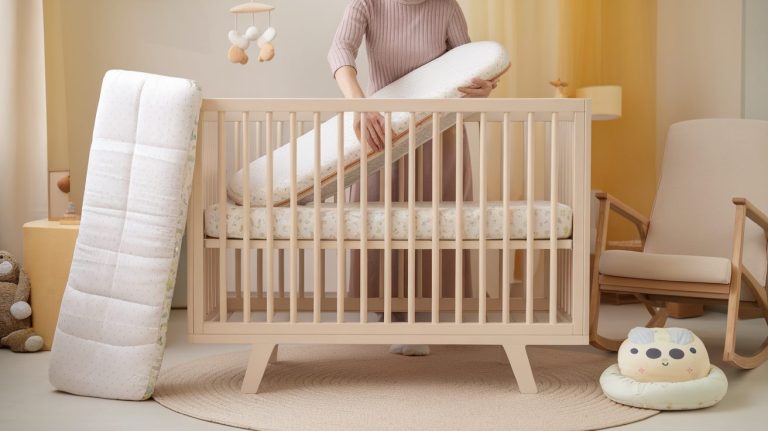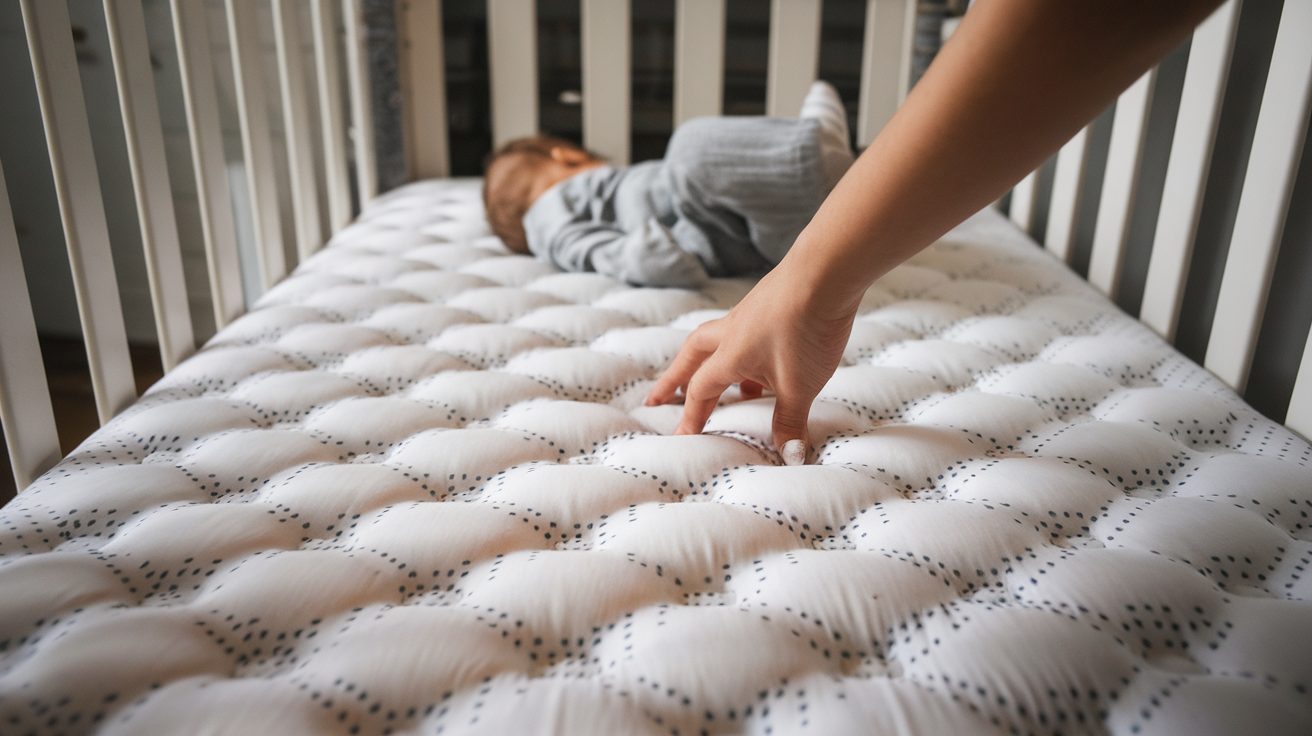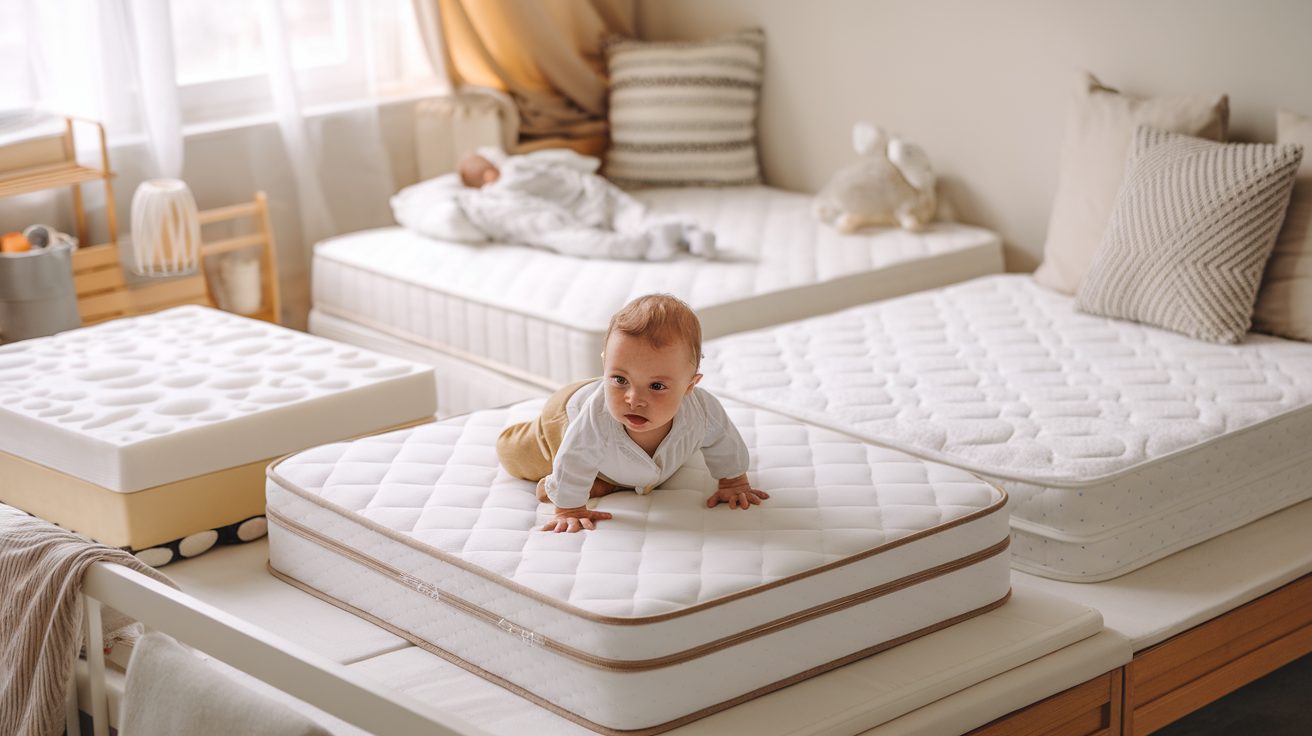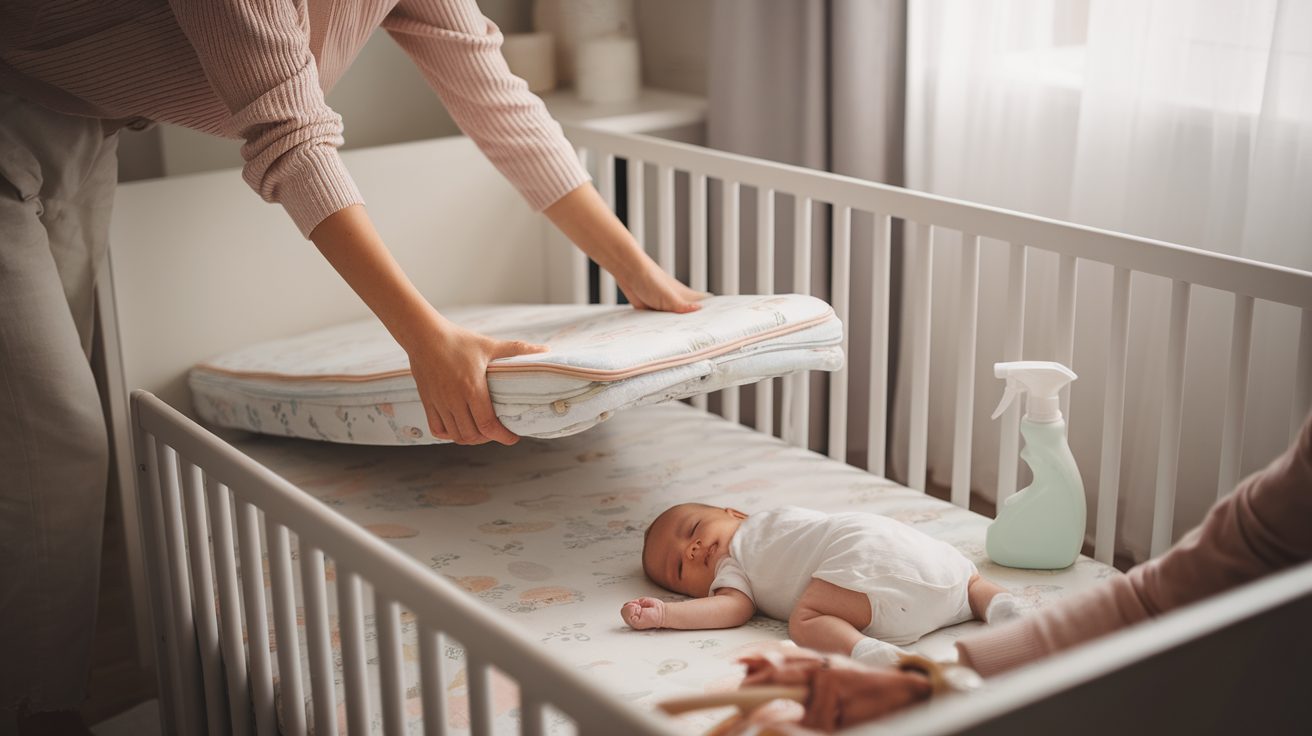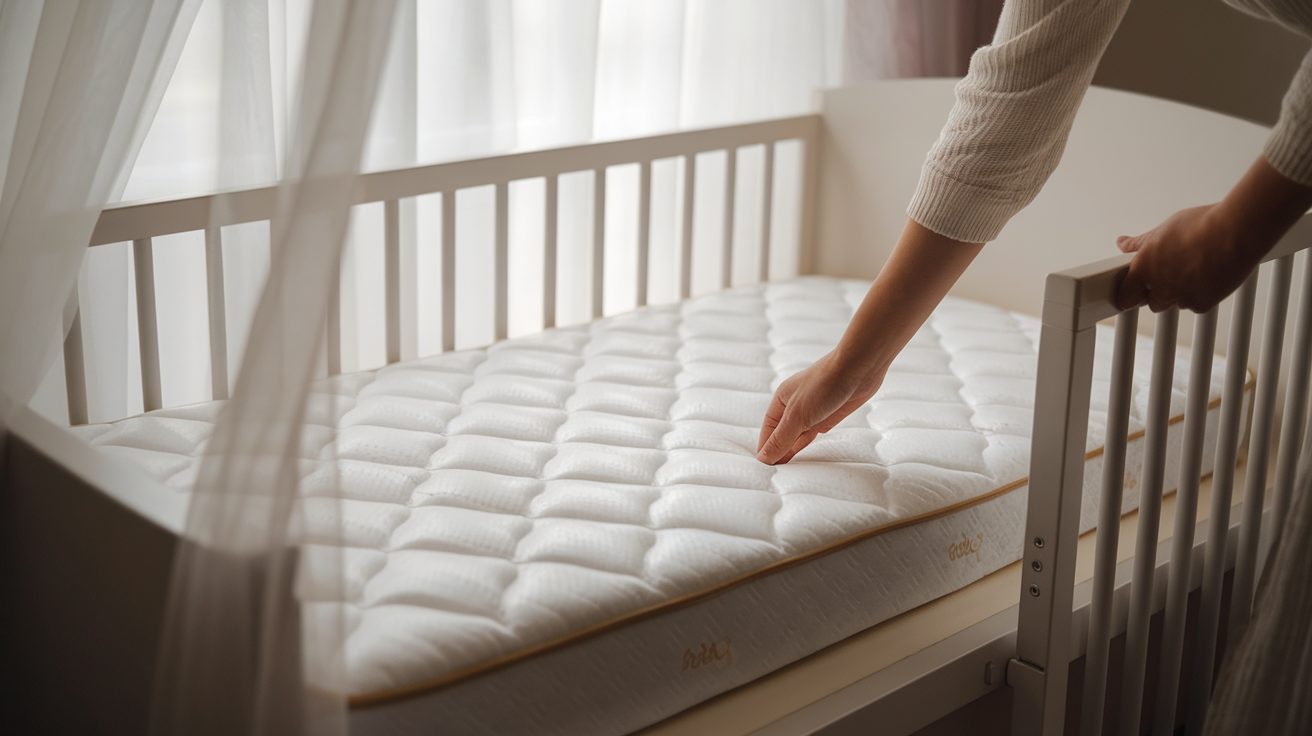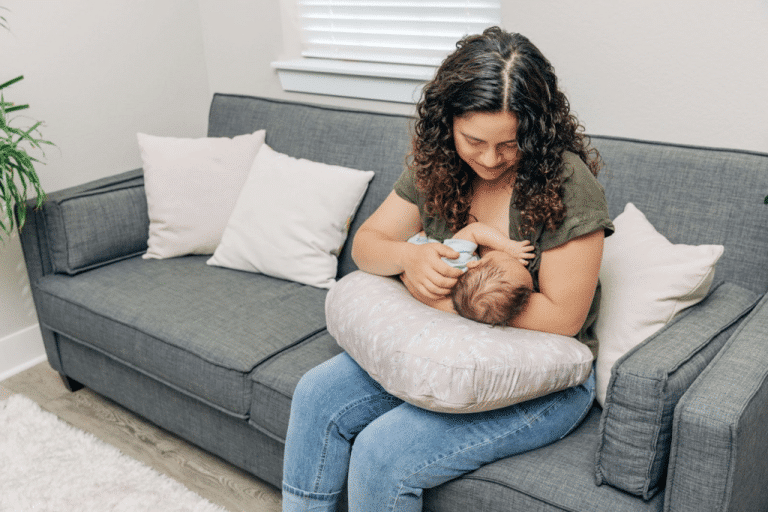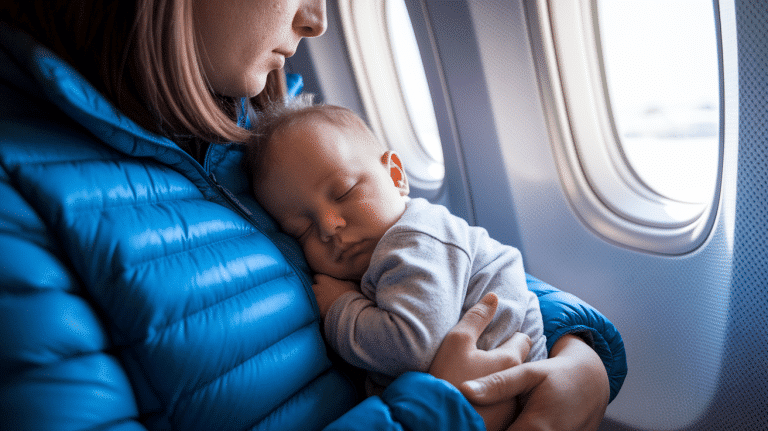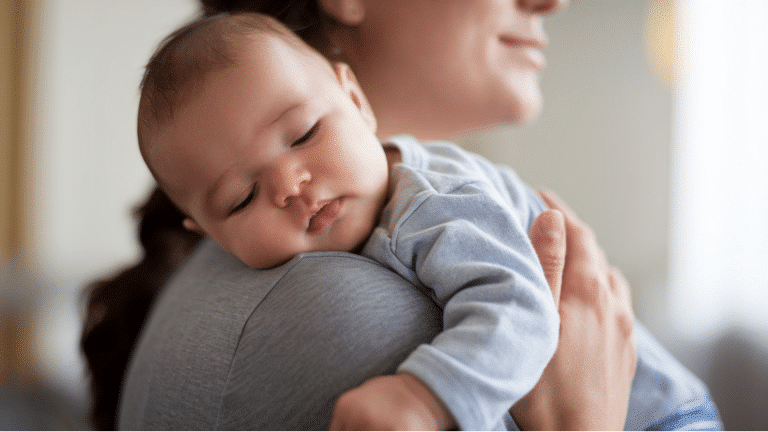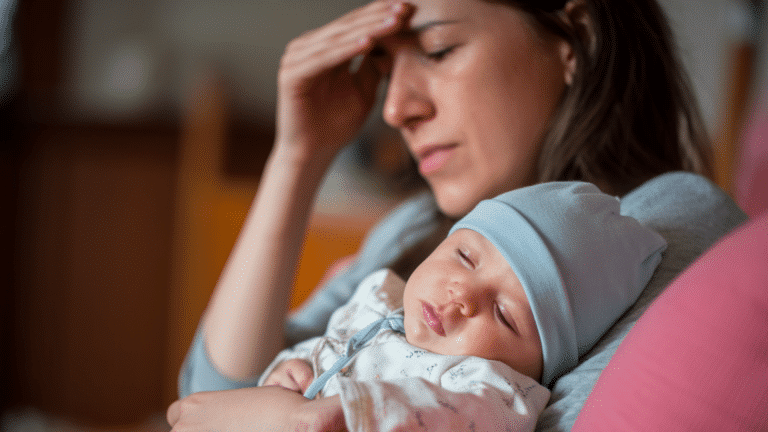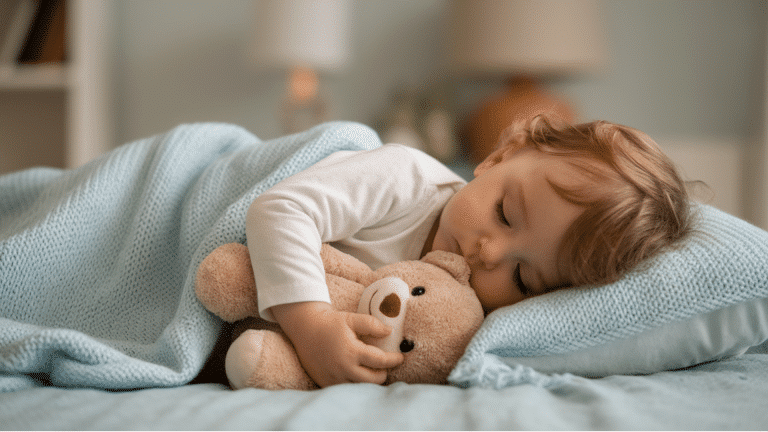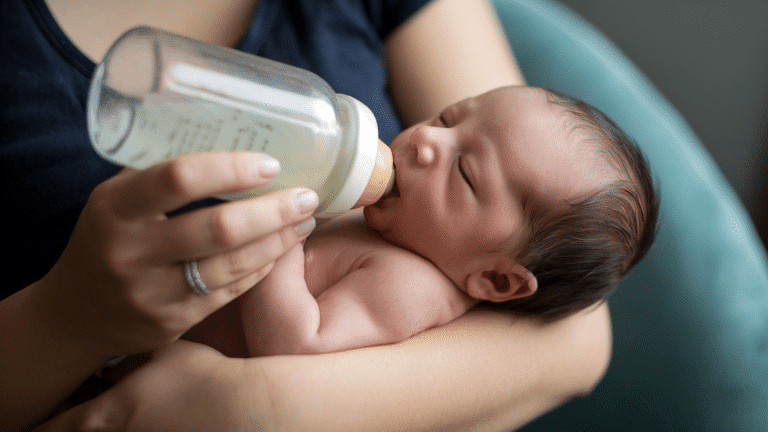Taking good care of your baby’s mattress is important for keeping your little one safe and comfortable during sleep.
A well-maintained mattress not only supports healthy sleep but also ensures your baby has a cozy and hygienic place to rest. One key part of mattress care is flipping it over regularly.
This means turning it from one side to the other to help it wear evenly and prevent sagging or damage in certain spots.
But how do you know when to flip the baby mattress? Understanding the right timing and methods can make a big difference in extending its life and keeping it in great condition.
Let’s look at some simple guidelines to help you maintain your baby’s mattress, ensuring it stays in tip-top shape for your tiny sleeper.
The Early Stages: Is Flipping Necessary?
Small babies don’t need their mattresses turned over in the first six months.
Medical experts recommend keeping the mattress position steady in these early months. This maintains the right support that keeps your baby protected during sleep.
Ensure the mattress fits tightly in the crib with no spaces at the sides.
When you notice indents on the surface, you can turn the mattress head-to-foot (keeping the same side up) for even wear. But always check your mattress instructions first—each type might need different care.
What matters most is giving your baby a solid, flat place to sleep that keeps them safe and cosy in their first months.
When to Start Flipping: The 6-Month Milestone?
1. Signs Your Baby’s Mattress Needs Flipping
- Dip in the surface where your baby usually sleeps—run your hand across to feel any low spots that are deeper than 1/2 inch.
- The middle area sinks when you press it gently with your palm and doesn’t spring back quickly.
- One side is noticeably lower than the other when you look at it from the end of the crib.
2. To Check if the Mattress is Still Good
- Press different spots with your hand—the surface should feel firm and even.
- Place a ruler across the top—there shouldn’t be gaps underneath it.
- Check that the edges are still straight and firm.
- Make sure there are no lumps or bumps that could make your baby uncomfortable.
- Look for any tears or holes in the cover.
When to Flip Based on Mattress Material?
| Mattress Material | When to Flip | Benefits |
|---|---|---|
| Foam Mattresses | Every 2-3 months | Prevents dips, extends the lifespan of both sides |
| Spring Mattresses | Every 3-4 months | Maintains spring strength, keeps surface even |
| Mixed Material Mattresses | Every 3 months | Preserves foam and springs, ensure even support |
Tips for Flipping Baby Mattresses Safely
1. Flip Without Disturbing Baby’s Sleep
When to do it: Flip the mattress during your baby’s playtime or feeding time when they’re awake and active. If possible, choose a time when someone else is watching the baby so you can focus on the task without interruptions.
Steps to Flip the Mattress:
-
Remove all sheets and covers from the mattress.
-
Clean both sides using a baby-safe cleaner to ensure it’s hygienic.
-
Let the mattress dry completely before moving it.
-
Gently turn it over to avoid making noise.
-
Finally, put fresh sheets back on to keep the sleeping area cosy and clean. This process helps maintain the mattress and keeps your baby comfortable.
2. Always Keep in Mind
When handling the mattress, use both hands for better support.
Bend your knees, not your back, to avoid strain. If the mattress is heavy, ask someone to help you. When turning it, keep one side touching the crib to make it easier and safer.
This helps your baby sleep well and keeps the mattress lasting longer.
3. Replace Instead of Flipping the Mattress
When it’s time to replace your mattress, look for clear signs of wear. If your mattress is older than 7-8 years, shows damage on both sides, or feels hard in the middle, it’s probably worn out.
When you can feel the base through the padding, and flipping doesn’t make it more comfortable, it’s time for a new mattress. Keeping an old, damaged mattress can harm your baby’s sleep and health.
How to Maintain Your Baby’s Mattress for Long-term Durability?
This section focuses on strategies to preserve the lifespan and comfort of the mattress over time so that you do not have to replace the baby mattress more often. It can include the following points:
-
Use a Waterproof Mattress Protector: Explain how using a high-quality waterproof cover can protect the mattress from spills, stains, and accidents, which is crucial for hygiene and maintaining mattress integrity.
-
Keep the Mattress Away from Direct Sunlight: Suggest keeping the mattress away from direct sunlight, which can cause materials to degrade and lose their firmness over time.
-
Check for Wear and Tear: Encourage parents to periodically inspect the mattress for any signs of wear, such as lumps or flattening, and remind them that timely replacement is essential for their baby’s health.
Conclusion
Flipping your baby’s mattress is essential for maintaining a safe, comfortable, and supportive sleep surface as they grow.
Regularly checking for signs of wear and rotating the mattress can help ensure your baby sleeps soundly and free from discomfort.
Always follow the recommended guidelines based on your baby’s age and mattress type, and replace the mattress if it shows signs of significant wear.
By staying proactive, you can create a safe and nurturing sleep environment that supports your baby’s health and well-being throughout their developmental stages.
Now that you know when and how to flip your baby’s mattress, make it a part of your routine to ensure they sleep soundly and safely every night.
Frequently Asked Questions
What Age to Flip an Infant Mattress?
Most infant mattresses should be flipped between 12-18 months old. This is when babies start to move around more and may need a firmer surface.
What Level Should the Crib Mattress Be At?
The crib mattress should be at the highest level for newborns. Lower the mattress as your baby grows and starts to sit up or stand. The lowest level is safest for babies who can pull themselves up.
What Age Can Babies Have a Softer Mattress?
Babies should sleep on a firm mattress until they are at least 12 months old. After 12 months, you can consider a slightly softer mattress. However, the mattress should still be supportive and not too soft.
How Long to Use an Infant Mattress?
Use an infant mattress until your child outgrows their crib. This usually happens between 18 to 36 months of age. Transition to a toddler bed or mattress when they’re ready.

